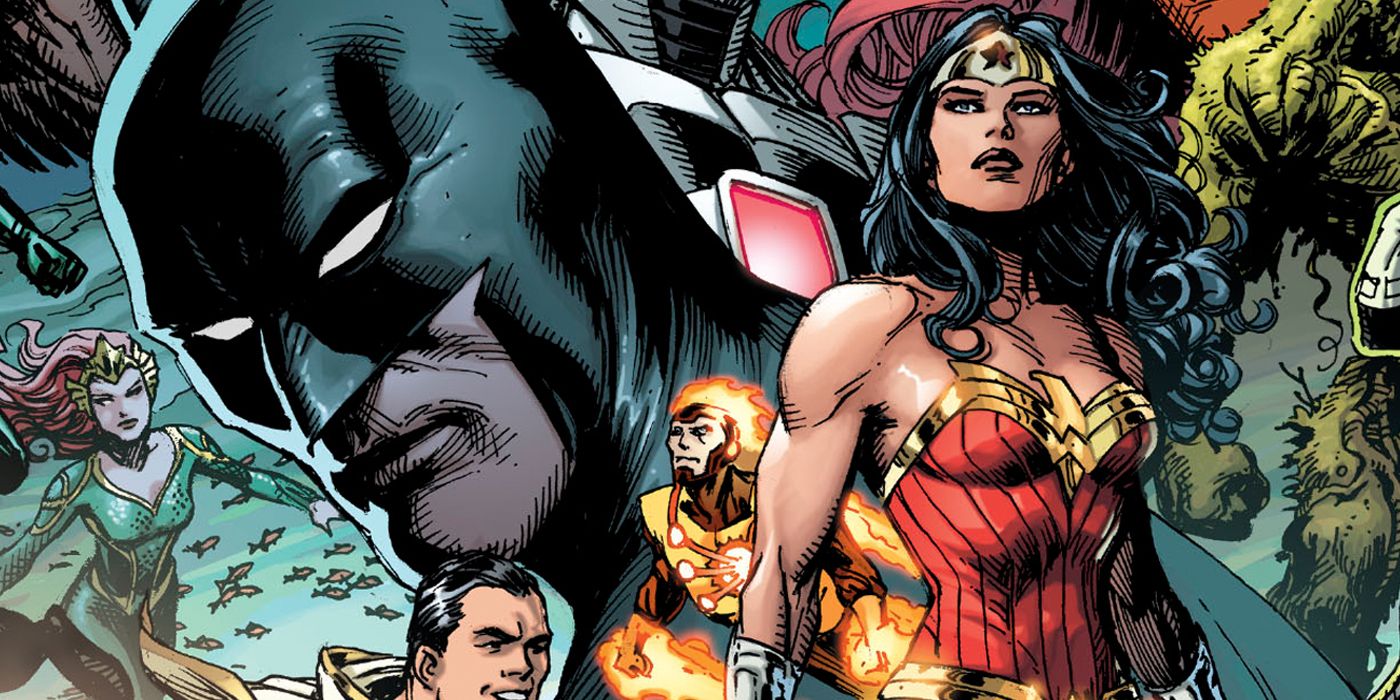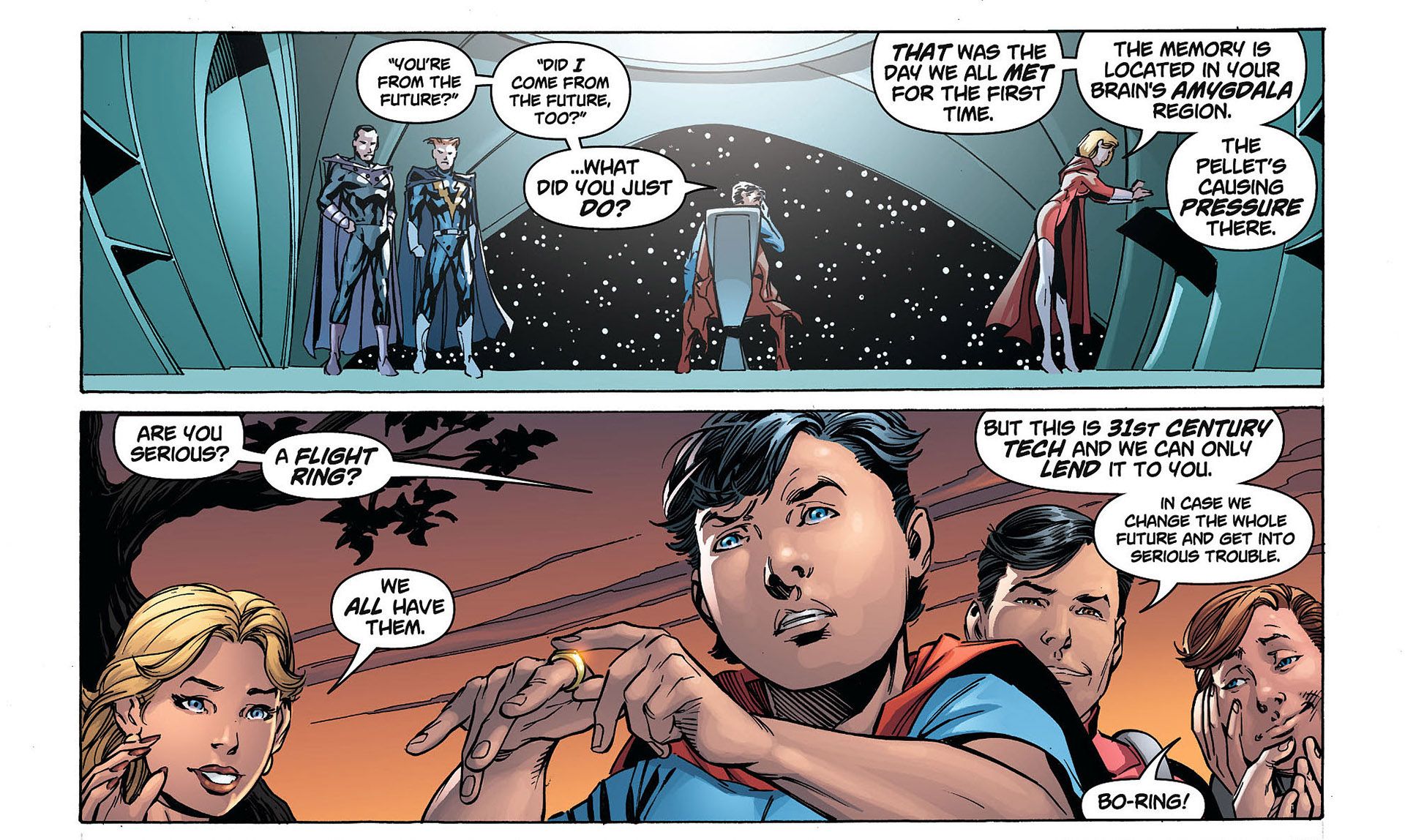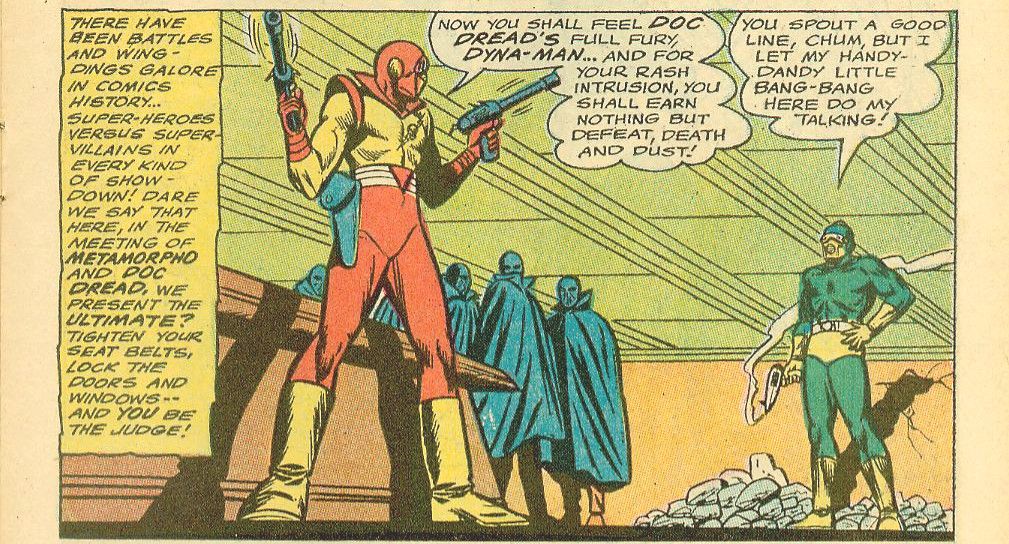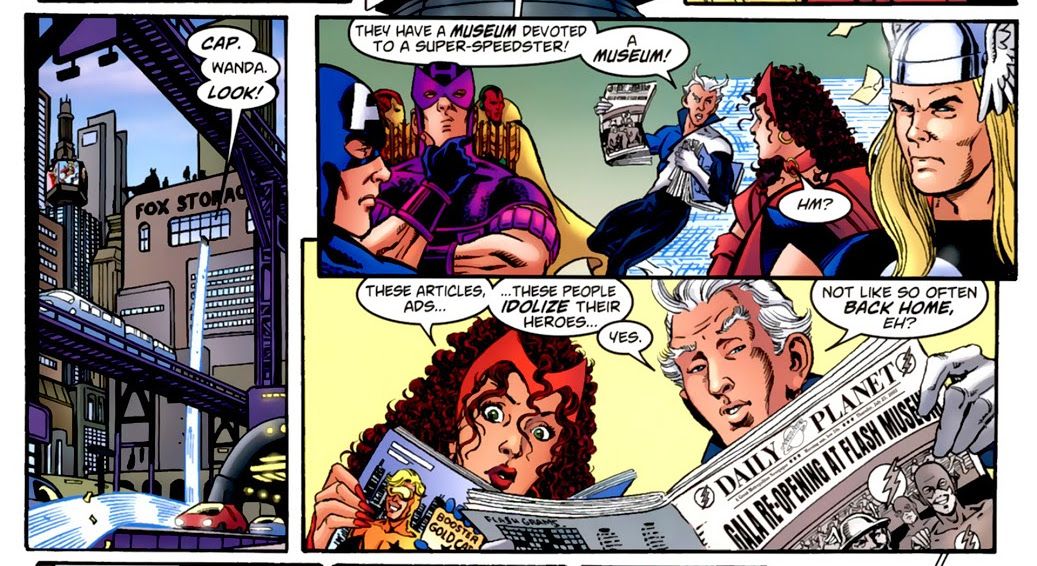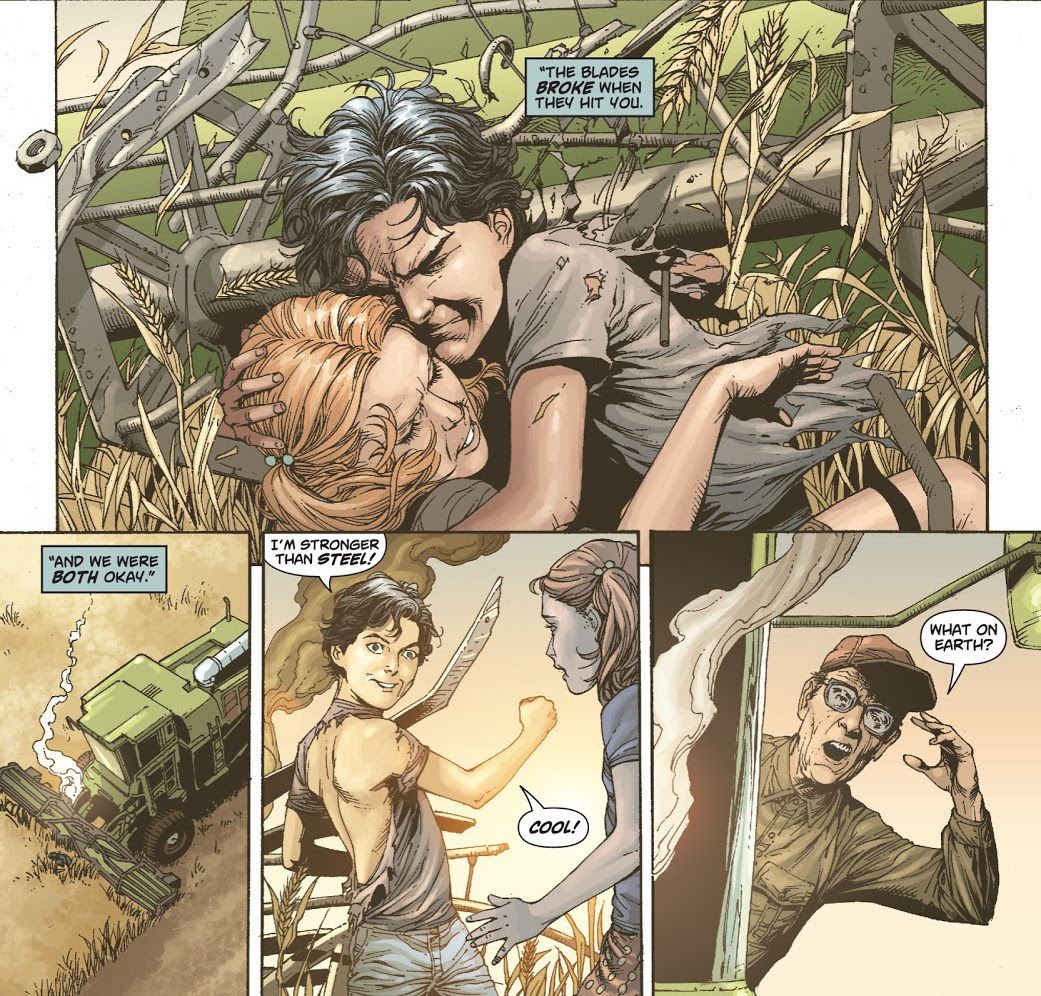WARNING: The following article contains spoilers for Doomsday Clock #11, on sale now.
The penultimate issue of Watchmen is famous for Ozymandias' chilling, "I did it thirty-five minutes ago" revelation. While there's nothing like that in Doomsday Clock #11, writer Geoff Johns and artist Gary Frank do amp up the tension with a couple of super-fights and a lot of updates on key players.
Based on Alan Moore and Dave Gibbons' classic 12-issue series Watchmen, Doomsday Clock #11 was written by Geoff Johns, drawn by Gary Frank, colored by Brad Anderson and lettered by Rob Leigh. Amie Brockway-Metcalf designed the text pages. Brian Cunningham was the Editor, with Amedeo Turturro as Associate Editor.
SAY GOOD-BYE TO SATURN GIRL (PAGES 21, 25-26)
First, let's unpack whether Superman should remember Saturn Girl, as mentioned on Page 25.
Traditionally, Superman knows the Legion of Super-Heroes because they introduced themselves to him when he was a teenager in Smallville. The original account happened in 1958's Adventure Comics #247, and Johns and Frank riffed on it in Superman: Secret Origin.
Needless to say, they weren't the first. There are now at least four versions of the Legion, spread across the vast DC cosmos. Version 1.0 comes from Adventure #247 and runs through the end of the "Five Years Later" stories in September 1994's Legion of Super-Heroes #61. The second debuted in October 1994's Legion of Super-Heroes #0, following the events of September 1994's Zero Hour. The third came along in 2005's Legion of Super-Heroes #1 and ran for about three years before giving way to Version 1.5 in 2007.
Here's where it starts to get tricky: Version 1.5 was basically the original Legion, except its history diverged from that timeline somewhere around the mid-1980s. For example, Karate Kid died in 1984's Legion of Super-Heroes #4 but was somehow still alive when the Legion 1.5 timeline came along in 2007. Legion 1.5 became the main DC version from 2007 into the New 52 era, so D-Clock's Saturn Girl is most likely from Legion 1.5. Therefore, when she disappears in this issue, it probably signals the end of Legion 1.5.
Keep in mind, though, that when Grant Morrison was writing the first year and a half of the New 52's Action Comics, he and Andy Kubert introduced what appeared to be yet another version of the Legion, who also met young Clark in Smallville (see 2012's Action Comics #6). Arguably, if it's not considered part of Legion 1.5, that version went away when the New 52 Superman's history was combined with the pre-Flashpoint Superman's, back around 2017's Action Comics #976. Either way, this Superman had met Saturn Girl, probably in Smallville.
Thus, Superman should remember her, unless D-Clock has changed things again (somehow) so that Superman won't meet the Legion until he meets the new Legion 4.0. That version just debuted in 2019's Superman #14, where (spoilers!) they asked Supes' son, Jon Kent to join. Jon has yet to be seen in D-Clock, either because it takes place while he's off in space, or because he's been summoned to the 31st Century by Legion 4.0. It's probably not the latter, because Superman would have remembered Saturn Girl from when she helped recruit Jon. This means that D-Clock takes place before Superman #14 -- which isn't surprising, considering that D-Clock was originally scheduled to be finished last year.
While we're on the subject, the Time Sphere (mentioned on Page 21, also known as the Time Bubble) is the Legion's preferred method of time travel. Developed by the young Brainiac 5, it first appeared in Adventure #247. It is not to be confused with Rip Hunter's Time Sphere, which was a 20th Century invention and first appeared in 1959's Showcase #20.
BLACK ADAM, WHITE HOUSE (PAGES 24-25, 27)
Striding confidently with Black Adam on Page 24 are Giganta, the Creeper, Doc Dread, someone who looks like Moonbow, Killer Frost, Man-Bat, a Manhunter, Stingaree, Lady Clayface and Sandstorm. Most of these folks have already been mentioned in D-Clock, but this is the first time we've seen many of them in person. Moonbow and Killer Frost come from classic Firestorm comics (although Moonbow was more of a wannabe hero), while Doc Dread and Stingaree faced off against Metamorpho in the Silver Age.
(We do need to correct the record about Doc Dread. Earlier we said that he first appeared in Metamorpho Year One, but apparently we didn't dig deep enough. He's an original-series Metamor-foe (not sorry) created by Bob Haney and Sal Trapani for 1966's Metamorpho #8.)
The red-and-blue android is a Manhunter, created (in-universe) by the Guardians of the Universe billions of years ago as part of an intergalactic peacekeeping force. When the Manhunters didn't quite work out, the Guardians went back to the drawing board and came up with the Green Lantern Corps.
As for who created the Manhunters in the real world, the short answer is Steve Englehart and Dick Dillin, and the longer answer goes back to Jack Kirby and Joe Simon. The latter created the Golden Age superhero Manhunter, aka Paul Kirk, for 1942's Adventure Comics #73. He wore a red costume with blue gloves and boots, and a silver facemask. Archie Goodwin and Walt Simonson revived Kirk (literally) for a short-run backup series starting in 1973's Detective Comics #437 but he died in #443 (1974).
That brings us back to Kirby, who put a new guy (Mark Shaw) into an updated Golden Age Manhunter costume for 1975's 1st Issue Special #5. This time, the Manhunters were a secret society of crimefighters, headed by a golden-armored Grand Master. Englehart and Dillin incorporated Kirby's Mark Shaw and the Manhunter society into their own tale of the Guardians' rebellious androids for a two-parter starting in 1977's Justice League of America #140.
Accordingly, Black Adam has assembled a decent squad of super-baddies, plus Moonbow, Doc Dread and Stingaree. Maybe those three won a contest?
PEOPLE, PLACES AND QUOTES (PAGES 5, 7-8, 13-14, 28)
The Hall of Justice appears on Page 5. Located in Washington, D.C., it was built under Bruce Wayne's direction (as related in 2018's Dark Nights: Metal #6). Of course, it looks just like the Super Friends' Justice League headquarters, which itself was based on Cincinnati's Union Terminal train station. Similar Halls of Justice have been the League's comics headquarters previously, including in the 2006-2011 Justice League of America series (where it had an orbiting satellite counterpart) and the New 52 version of Justice League International (where it was destroyed by a terrorist attack).
As Page 13 mentions, John Hinckley, Jr. tried to kill President Ronald Reagan with a handgun on March 30, 1981, in Washington, D.C. He did wound Reagan, two Secret Service agents, and Press Secretary James Brady. However, he was found not guilty by reason of insanity and spent the next 35 years in a psychiatric institution. He was released in September 2016.
Nathaniel Dusk's line on Page 14 is a paraphrase of the poem "Alumnus Football" by the prototypical American sports reporter Grantland Rice: "For when the One Great Scorer comes to mark against your name, He writes not that you won or lost, But how you played the game." Henry Grantland Rice also became famous for such lyrical touches as referring to the 1924 Notre Dame backfield as the "Four Horsemen" (as in "... of the Apocalypse," of course).
The Great Pyramid of Giza (Page 7) houses the tomb of the pharaoh Cheops (aka Khufu), who lived during the Fourth Dynasty (around 2560 BC). A number of DC super-folk have Egyptian roots, including Doctor Fate, Hawkman, Ibis the Invincible, the original Blue Beetle and the wizard Shazam.
John Broome and Carmine Infantino introduced the world to the Flash Museum (Page 7) in 1965's The Flash #154. Located first in Central City, and then in Keystone City, it's focused on the Flash careers of Barry Allen and Wally West (although Barry probably has the most memorabilia). Curated by actor Dexter Myles, the museum also houses a number of super-scientific devices, including villains' weapons and the Cosmic Treadmill.
Planet Krypton (Page 7) first appeared in 1996's Kingdom Come #1, written by Mark Waid and drawn by Alex Ross. There, it was part of an alternate future later assigned to Earth-22. A parody of celebrity-oriented restaurants like the Hard Rock Café and Planet Hollywood, it featured costumed waitstaff, enough superhero tchotchkes to choke a mastodon, and themed fare like the Man of Beef and "Dial 'H' For Hoagie." Kingdom Come's Planet Krypton (eventually seen in the main timeline in 1999's The Kingdom: Planet Krypton #1) was in Metropolis, so the one in D-Clock must be the Central/Keystone franchisee.
Page 8 appears to show the DC-Earth version of conspiracy theorist Alex Jones, who runs the InfoWars website.
James Joyce wrote fiction, poetry and a play, and occasionally was a journalist. A Portrait of the Artist as a Young Man (1916) was his first novel, recounting the religious and artistic journey of Joyce through his fictionalized counterpart, Stephen Dedalus. Page 28's quote from Portrait is preceded by a few lines which also seem pertinent:
"You made me confess the fears that I have. But I will tell you also what I do not fear. I do not fear to be alone or to be spurned for another or to leave whatever I have to leave. And I am not afraid to make a mistake, even a great mistake, a lifelong mistake and perhaps as long as eternity too."
Although the quote's context is Joyce's pushback against the fire-and-brimstone preachers of his youth, the sentiment applies generally to Ozymandias' sense of grand design and destiny. He's alone, he's left "what [he] had to leave," he knows what must be done and he's going to do it.
TEXT PAGES
We've seen most of the events associated with these photos. The exception is the Arkham Asylum photo, designated "Item #8," because, as far as we can remember, there hasn't been a scene with Doctor Manhattan and Reggie before or during Reggie's time in Arkham.
Item #3 was found in an old copy of Walden Two, the same book (although probably not the same copy) that Clark Kent had on his bedside back in Issue 2.
Wesley Dodds was the original Sandman, created by Gardner Fox and Bert Christman for 1939's New York World's Fair Comics #1. The Sandman starred in a long-running Adventure Comics feature (#40-102, July 1939 to February-March 1946); and was a founding member of the Justice Society of America (All Star Comics #3-21, Winter 1940 to Summer 1944). Dodds occasionally had prophetic dreams, thanks to his connection with Dream of the Endless (as described in 1995's Sandman Midnight Theatre one-shot). These dreams helped move along the plots of 1996's Kingdom Come and 1999's search for a new Doctor Fate (in the JSA series).
We think the Hubbards of Smallville were first alluded to in 1978's Superman movie when Clark tells Ma Kent (after Pa Kent has died) that Ben Hubbard can help her out around the farm. As far as we know, Ben Hubbard's first comics appearance came in 2007's Action Comics #855, when he was mentioned in a flashback. Ben then appeared on-camera in November 2009's Superman: Secret Origin #1.
The other photo is an alternate angle of Barry Allen and Jay Garrick saving that anonymous construction worker in 1961's The Flash #123. We're not sure what more needs to be said about "Flash of Two Worlds," except that this is probably a photo from the singular timeline formed after Crisis On Infinite Earths. Ironically, then, it would be a symbol of the Flashes as originator and successor, not as parallel-Earth counterparts.
By the way, if D-Clock follows the general Watchmen format, this should be the last set of text pages we see in the series. We've been consistently impressed by the care and thoroughness which has gone into them, so hats off to designer Amie Brockway-Metcalf and everyone else involved.

